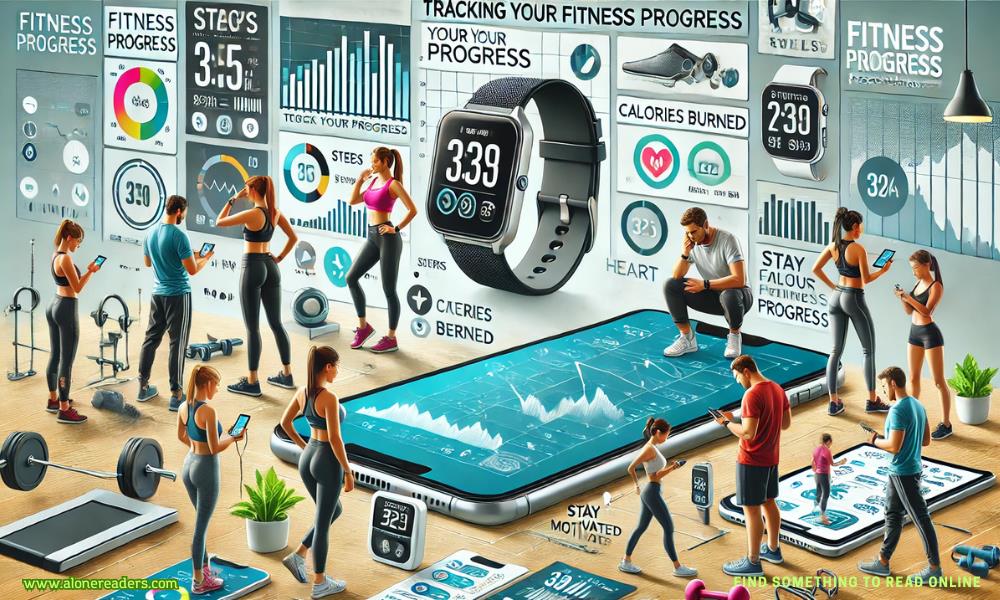
Tracking fitness progress is more than just stepping on a scale or logging miles run. Whether you're building muscle, losing weight, or boosting endurance, measuring progress with the right tools and techniques can transform your fitness journey. As our understanding of human physiology advances and technology evolves, tracking methods have become smarter, more precise, and more personalized. This article delves deep into the tools, apps, and professional techniques that provide actionable data—not just numbers—for effective fitness tracking in 2025.
Data drives motivation.
When you can see results—whether it’s increased strength, improved heart rate variability, or reduced body fat—it keeps you motivated. Without tracking, improvements can go unnoticed, leading to plateaus or even regression.
It helps optimize performance.
Tracking enables you to identify what works and what doesn’t. It brings objectivity to your routines and removes guesswork from your diet, recovery, and training intensity.
Early detection of overtraining or health issues.
Changes in resting heart rate, sleep patterns, or recovery markers can alert you to fatigue, stress, or other underlying issues before they become serious.
Body Composition:
Rather than tracking weight alone, monitor body fat percentage, lean muscle mass, and water retention using tools like bioelectrical impedance scales or DEXA scans.
Resting Heart Rate (RHR):
A reliable marker of cardiovascular fitness. A decreasing RHR over time often indicates improved fitness.
Heart Rate Variability (HRV):
This advanced metric helps assess stress and recovery. A higher HRV typically means better recovery and nervous system health.
VO₂ Max:
The maximum oxygen your body can utilize during exercise. It's a gold standard for aerobic endurance and can be tracked with advanced smartwatches or lab testing.
One-Rep Max (1RM):
Track progress in strength training by monitoring improvements in your 1RM across different lifts like squats, deadlifts, or bench press.
Running Pace or Cycling Wattage:
For endurance athletes, pace per kilometer or power output on a bike (measured in watts) provides more actionable data than total distance.
Recovery Time and Sleep Quality:
These directly impact performance. Use wearables or smart sleep trackers to monitor sleep stages, duration, and disturbances.
Wearable Trackers (Wrist-Based):
Smart Scales:
Strength Training Sensors:
Posture and Movement Trackers:
Kinetisense or DorsaVi: Used by physical therapists and athletes to evaluate movement quality, symmetry, and injury risk.
MyFitnessPal:
Best for nutrition and calorie tracking. Allows macro and micronutrient breakdowns, barcode scanning, and meal planning. Syncs with fitness devices.
Strong App:
Ideal for strength training. Tracks sets, reps, rest time, and PRs. Offers templated workout plans and analytics over time.
TrainingPeaks:
A favorite among endurance athletes. Allows detailed planning and analysis of workouts. Offers metrics like TSS (Training Stress Score) and CTL (Chronic Training Load).
Strava:
Best for runners and cyclists. Tracks routes, pace, elevation, and heart rate. Provides community support and leaderboard challenges.
Fitbod:
AI-driven workout planner that adjusts based on previous sessions and recovery data. Great for home and gym workouts.
HRV4Training:
Used by serious athletes to interpret HRV data and adjust training loads accordingly.
Sleep Cycle or AutoSleep:
Analyzes sleep cycles, quality, and disturbances using motion and heart rate data. Offers actionable suggestions to improve recovery.
Journaling:
Use a paper log or digital journal to note:
This helps reveal patterns devices can’t always detect.
Progress Photos:
Taken under the same lighting and angles weekly or biweekly, they offer visual proof of transformation—especially useful when weight doesn’t change.
Tape Measurements:
Use a soft tape measure to track body parts: waist, hips, chest, thighs, and arms. These measurements often reflect progress better than the scale.
Fitness Testing Intervals:
Every 4–6 weeks, redo:
This measures functional progress over time.
Set SMART Goals:
Specific, Measurable, Achievable, Relevant, Time-bound.
E.g., "Increase VO₂ Max from 42 to 48 in 3 months."
Review Trends, Not Days:
Don’t panic over daily fluctuations. Look at weekly and monthly trends instead to gauge real progress.
Adjust Based on Recovery:
Use sleep and HRV data to modify workout intensity. Training hard on low-recovery days can lead to injury or burnout.
Pair Nutrition with Training:
Data from MyFitnessPal or a similar app should guide your macros depending on whether you’re bulking, cutting, or maintaining.
Periodization & Deload Weeks:
Track training volume and intensity to schedule deloads—a reduction in intensity or volume to promote recovery.
Over-Tracking:
Too much data can cause paralysis by analysis. Focus on 3–5 key metrics that align with your goals.
Chasing Vanity Metrics:
Weight or steps alone don’t equal progress. Prioritize functional indicators like HRV, VO₂ Max, and performance stats.
Ignoring Biofeedback:
If your energy, mood, or libido drop despite "good" numbers, your plan may need adjusting. Your body is the best feedback loop.
Not Recalibrating Goals:
As you evolve, your goals should too. Don’t stick to arbitrary benchmarks once you've outgrown them.
Conclusion
Fitness tracking in 2025 isn’t about obsessing over numbers—it’s about leveraging data to make smarter, more personalized decisions. With the right mix of technology, self-awareness, and consistent review, you can eliminate guesswork and optimize every aspect of your training. From professional-grade wearables and training apps to traditional methods like journaling and tape measurements, the tools available today offer insights once reserved for elite athletes. Choose the ones that fit your lifestyle, set goals with purpose, and let the data empower your path to peak performance.